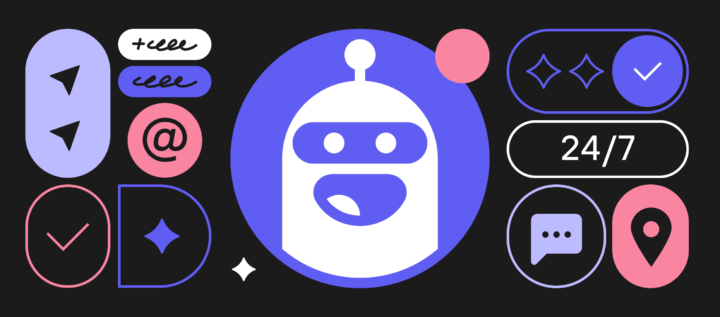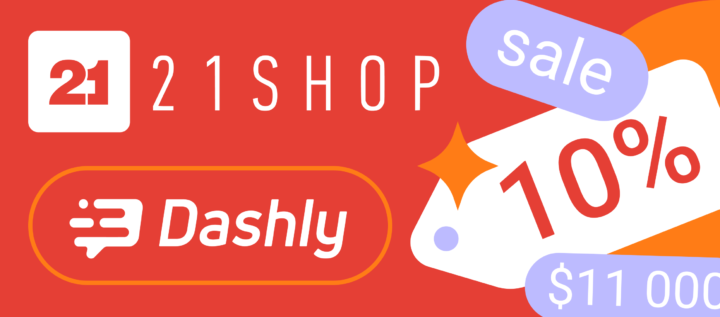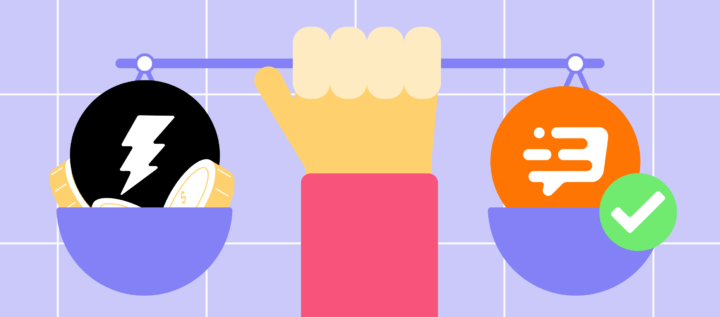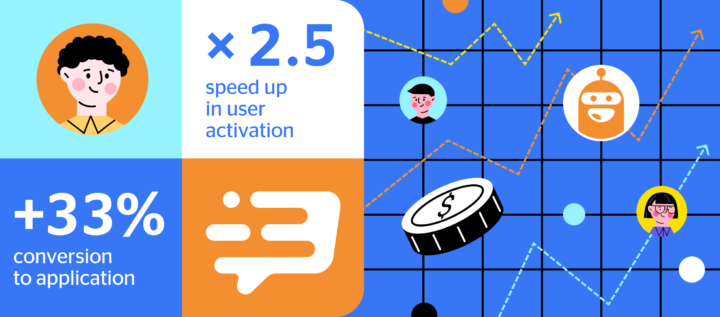How Dashly helped software development company increase orders number with 60% of them being target ones
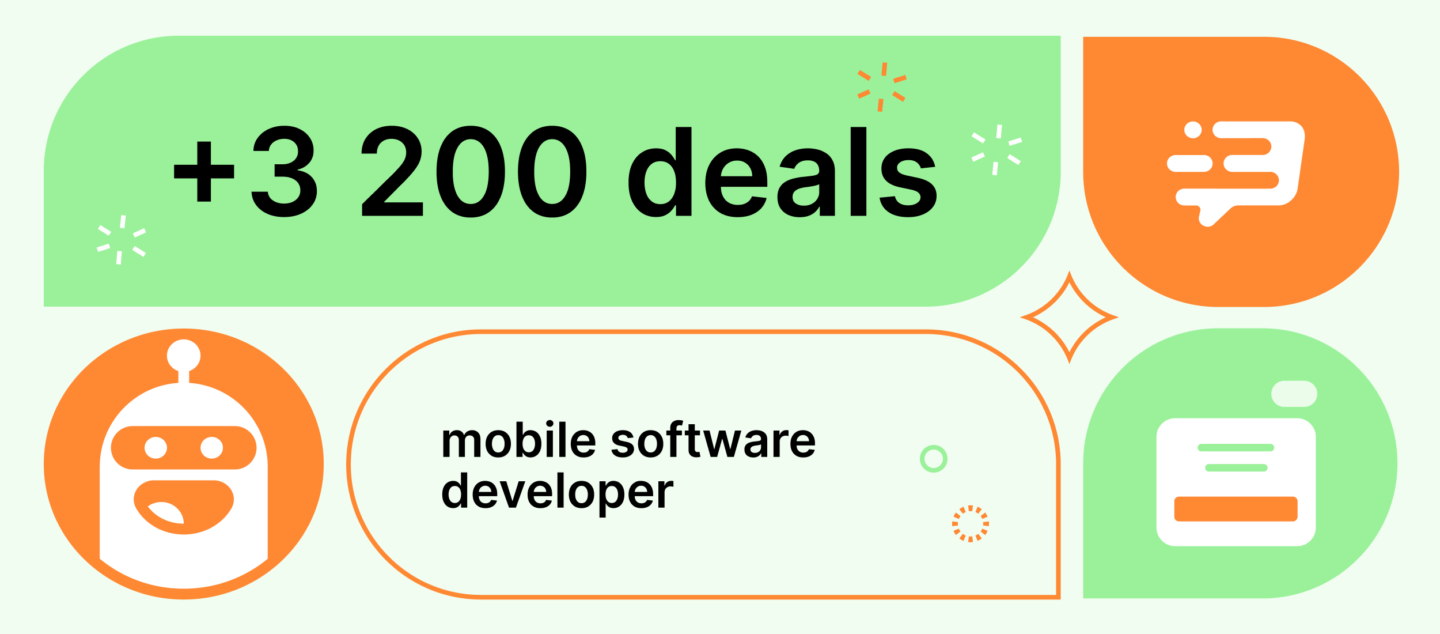
This is the story of Seamus Bennett (CEO and co-founder of KVR software development company), who hired Dashly to improve the lead qualification process on his website.
After the Dashly implementation experts’ workshop, website chatbot and pop-ups on his website, Seamus’s team:
- Pre-qualify leads on autopilot. It saved them three working weeks in two months.
- Spend saved time on more prospective users like long sales cycle clients.
- Enjoy +12% of orders coming from Dashly website campaigns. About 60% of these requests were targeted.
The client
KVR is a mobile software developer that automates routine business processes in production, warehouses, and stores. For example, it helps with the revaluation on the sales floor, shipment of goods in a warehouse, and stock control.
Business segment: B2B, B2G
Target audience: individual entrepreneurs, large retail chains, manufacturing, public sector.
Sales channels: website, phone, email, partners.
CRM: amoCRM
Dashly tools used: pop-ups, chatbot, website visitors tracking.
Problems, tasks, and objectives
The goal of the client is to increase revenue and LTV.
I wanted to increase sales without margin growth. So, I started researching how marketing and sales work in software companies. Thus, I got to know Dmitry Ive, Dashly’s CEO and co-founder. It was interesting for me to know how his team set up their processes. As a result, I ordered the implementation service from Dashly.
Before working with Dashly, the company’s applications ended up in amoCRM. Then, managers qualified leads manually via calls. They asked prospects five questions to determine if the lead was ready to purchase:
- What is your task?
- What is your accounting system?
- What processes need to be automated and how many employees are involved?
- Do you exchange data with the accounting system offline or online?
- Is there any specialized equipment and what kind?
Sales managers were working only with those who were ready to pay quickly and start implementing our products. But in order to grow revenue, it was necessary to learn how to work with leads that take longer to warm up, not ready to purchase right away.
The task of selling long-term is unnatural for sales managers who depend on monthly bonuses from sales targets. Therefore, we had to adapt the processes of qualifying and warming up leads.
The task of our team was to establish and automate the primary qualification processes on the site.
We divided all the work into two steps:
- Workshop with the marketing, sales team, and co-founder of KVR to determine:
- what we consider a target lead and what characteristics it has;
- what leads we transfer to the sales team in amoCRM;
- what data is missing for qualification, and how to collect it.
- Develop and test scenarios for qualification based on the workshop results.
Workshop to define the ideal customer profile
To help the client decide on what characteristics distinguish ICP for them, Dmitry Ive, CEO and co-founder of Dashly, held a seven-hour workshop. KVR was represented by employees from the marketing and sales team, along with the company’s co-founder, Seamus Bennett.
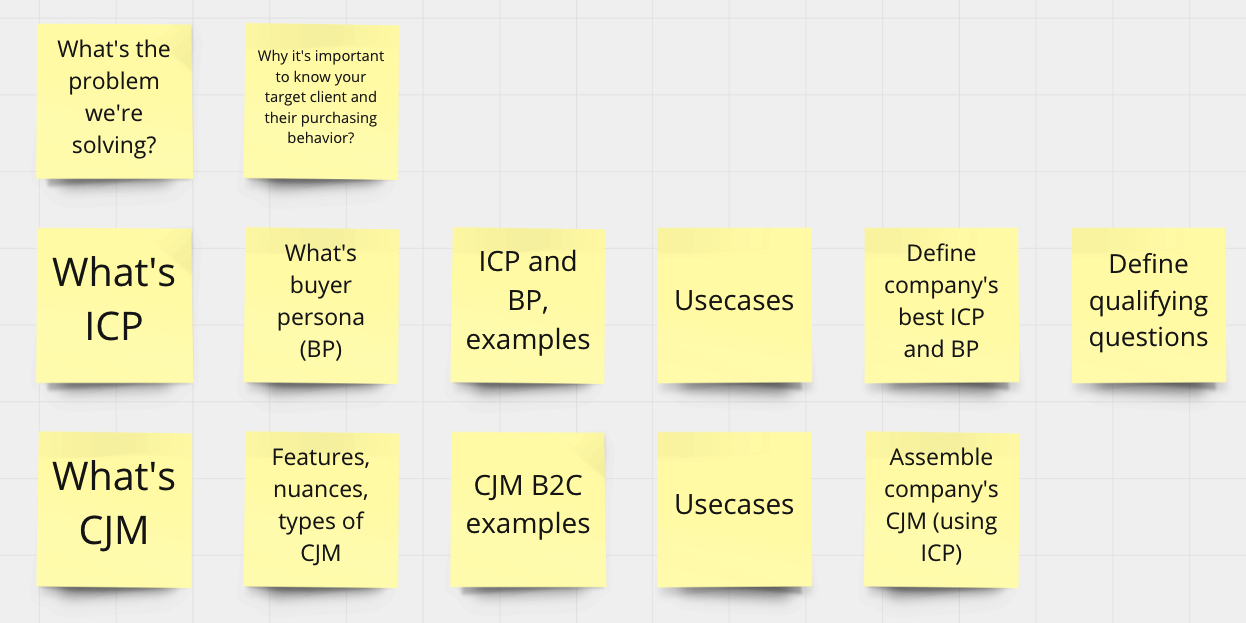
The workshop consisted of theoretical and practical parts. Together with Dmitry, KVR employees created a portrait of an ideal client.
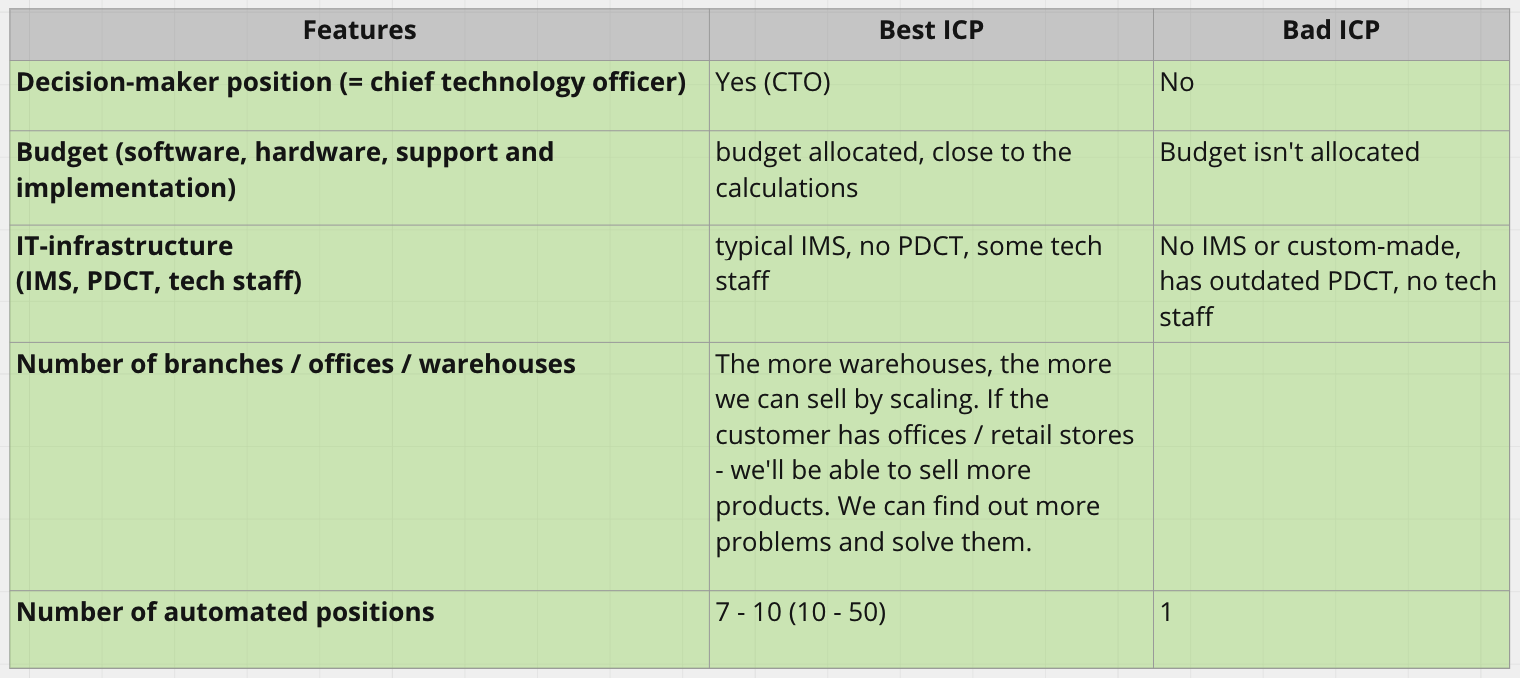
Based on the workshop results, the teams created pop-up quizzes and chatbot scenarios for implementation.
Website visitors data tracking to personalize marketing scenarios
First, we finalized website visitors’ tracking. Thanks to this, KVR team knows who viewed certain product pages, articles or read an email. It helps them to segment the audience and personalize marketing scenarios according to the visitors’ interests.
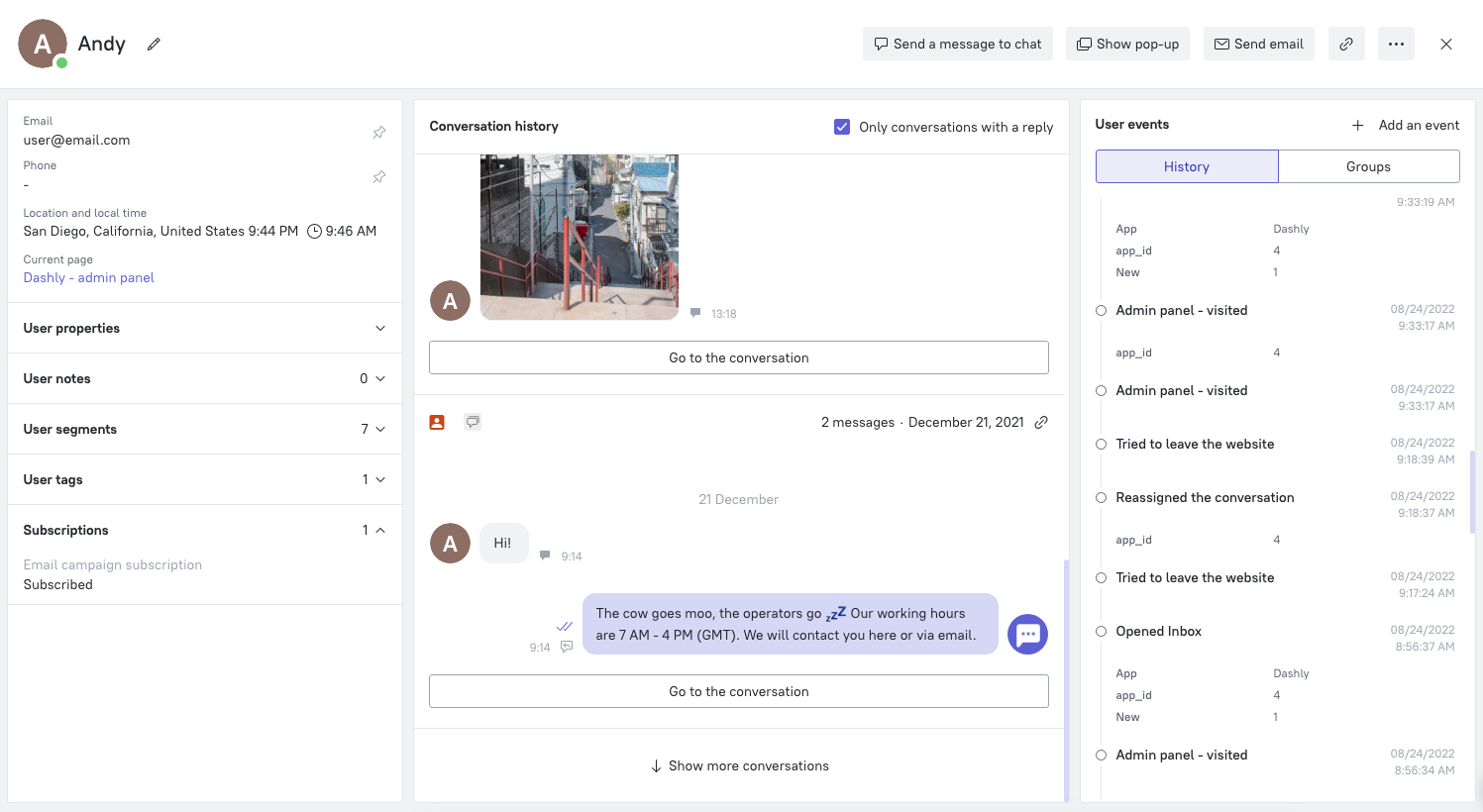
In a lead card, the company’s managers also can see visitors’ answers to qualifying questions in pop-ups and a chatbot.
Pop-up quizzes to automate lead qualification on product pages
After looking at traffic sources, we realized that product pages visitors are more ready to buy. So we launched three-question pop-up quizzes there. When visitors tried to leave the web page, they saw a pop-up guiding them on the product choice.
Qualifying pop-up quiz on one of the product pages:
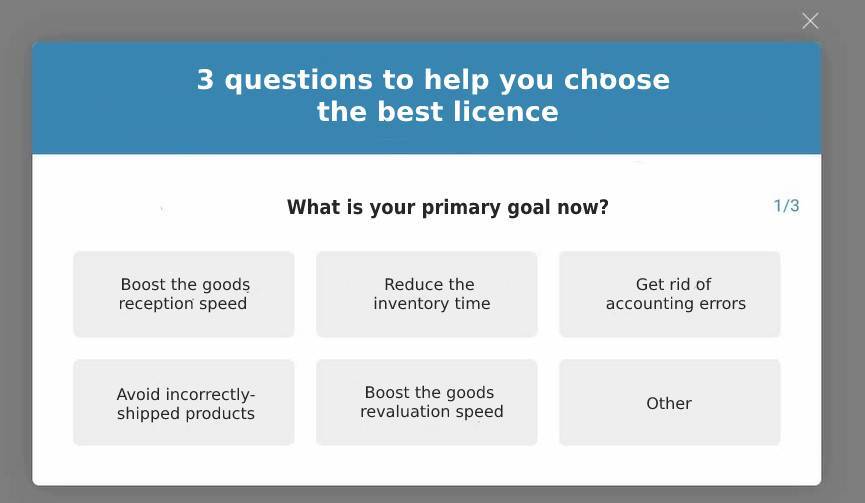
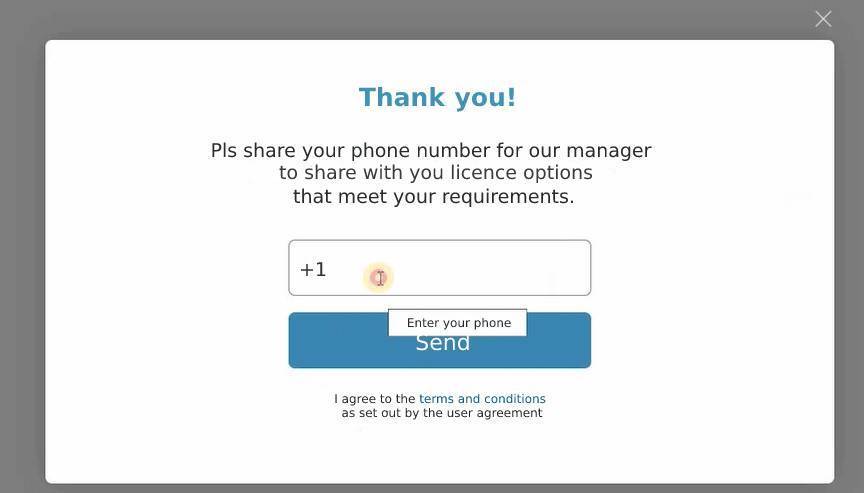
Thanks to quizzes, the company’s managers know the answers to basic pre-qualification questions in advance. Thus, they can define leads that meet the ICP portrait and call them first.
Chatbot to capture and qualify blog readers automatically
KVR also has some significant blog traffic coming from search engines. Together with the client, we created a chatbot using a visual builder.
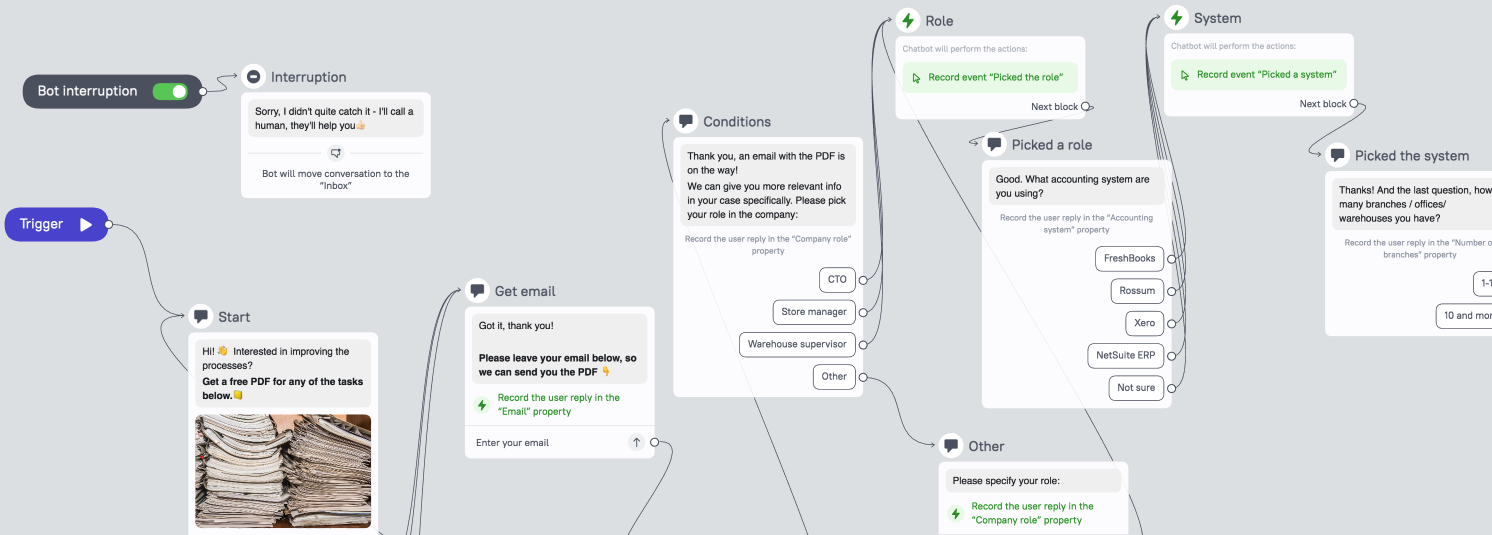
Sign-up to build your chatbot. 7-days free
With the help of a chatbot, we qualified visitors of product pages, looking for those who meet ICP requirements.
Every visitor of the blog articles had the opportunity to communicate with a chatbot after the first 30 seconds of the session.
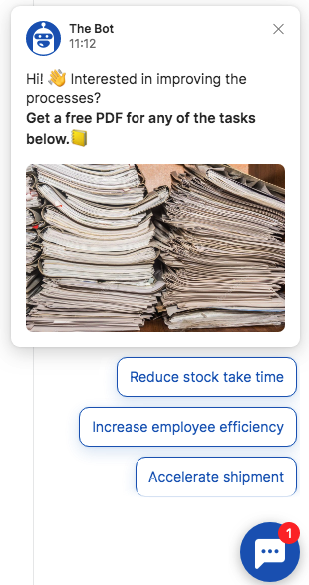
CRM integration for routing targeted lead cards to managers automatically
KVR already had an integration with amoCRM. However, any and every lead got there, which was inconvenient.
After the workshop, the settings were changed. So that only applications from qualified leads get into the managers’ CRM.
In the amoCRM lead card managers can see the lead answers to pop-up quizzes and the chatbot qualifying questions. Having this info in advance, it is easier to prepare for the calls and understand what to offer the client.
Primary qualification department to process email, phone, and web forms orders
KVR received a lot of orders via phone and email, as well as via forms on the website. They can’t qualify that lead automatically. To initially process them, the company created a team of several “qualifiers”. These are junior sales managers that call leads to determine
- task scope,
- client’s readiness to deal,
- budget and time to implement the product,
- a person responsible for purchasing decisions.
Since a long sales deal is unnatural for our sales managers, we needed a separate team of qualifiers. They look for prospective clients and pass them to the appropriate funnels.
A qualification team costs much less than a team of experienced sales managers. Therefore, it was more profitable for KVR to have qualifiers deal with the primary leads processing, and managers to focus only on promising customers.
It was also important to establish communication between the qualification, sales, and marketing teams. They hold regular meetings and sort out qualification errors. For example, sales managers can find out that, in fact, the lead doesn’t fit the characteristics reported by the qualification team. Together they sort out the mistakes and brainstorm the solution.
The primary qualification helps the marketing team as well: now we better understand how to attract targeted leads, what content and channel to use. Marketing and qualification teams do a daily check-up to see:
— how many targeted and non-targeted leads came over the past day,
— whether the number of non-targeted leads has increased too much,
— what the characteristics non-targeted leads have and why they don’t fit our profile.
The results
This is what the company has achieved:
- Set up qualification processes, learned how to sort leads into “quick” and “long” ones based on their readiness to purchase, and send them to the appropriate funnels.
- Get +12% of orders from the implemented pop-up quizzes and the chatbot.
- 60% of the orders from quizzes and the Dashly chatbot are targeted.
- In two months, sales managers got almost three weeks’ worth of time free from primary qualification. Now they can focus on working with promising clients.
In October and November, 3,200 deals passed through the qualification team. 456 were non-targeted ones, so sales managers didn’t have to spend their time on them.
Robert, Deputy Head of Sales
On average, it takes 15 minutes to qualify a lead. Calling 456 leads takes 6840 minutes = 114 hours = 14.25 working days = almost 3 weeks. That’s how much time the company saved in 2 months for sales managers.
We started working with clients with a long transaction cycle. But so far we cannot evaluate the effectiveness of this, because all such transactions are still in progress, lasting from six months up to a year.
Through automatic qualification and qualifiers, answers to basic questions are known in advance. Managers can prepare for a call with clients and immediately understand what to offer them.







